Please support Game Informer. Print magazine subscriptions are less than $2 per issue
The Evolution Of Steampunk In Video Games
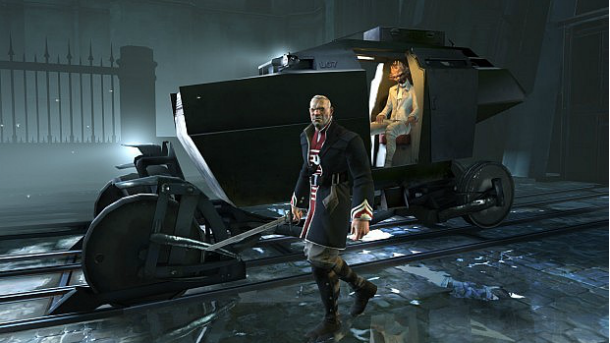
A multitude of video games have delved into the steampunk genre throughout the history of the medium.
This was inevitable, based on the success authors and screen writers have had adapting the style to their respective fields. As new games emerge, showcasing the unique aesthetic, it’s interesting to see how steampunk has evolved since it was first introduced into gaming’s virtual worlds. The upcoming game Dishonored has a very distinct art style. From the industrial Tall Boy mechs to the protagonist’s otherworldly mask, the title promises to deliver an original experience. Art director Viktor Antonov’s prior work as an industrial designer is evident at every turn, from the architecture to the machinery of Dunwall, the in-game world. While the developer is stressing that the game doesn’t fall into the steampunk category, there are definitely obvious nods to the style.
What Is Steampunk?
The definition of the word “steampunk” is arbitrary at best. The aesthetic is constantly changing from generation to generation, providing a slippery basis upon which titles can be classified.
The term steampunk originated in a letter to science fiction magazine Locus, in which author K.W. Jeter attempted to encompass his literary works, and those of several other writers, under one genre. In contrast to the prevailing cyberpunk genre in which higher technology is emphasized, his 19th century settings and exaggerated industrial technology led him to the phrase “steam-punks.”
Authors like Jeter, Tim Powers, and James Blaylock combined the architecture and clothing of the late 19th century with science fiction in a new genre where alternate histories were the norm. Novels like Morlock Night, The Anubis Gates, and Lord Kelvin’s Machine all elevated the genre to popularity. The spirit of invention and sense of discovery are commonplace themes in steampunk, and imagination runs rampant. This is where the punk side of the genre comes from. Like punk music, steampunk diverges from the mainstream, providing an alternative to the accepted tradition. The aesthetic’s blend of historical accuracy and fantastical twists has captivated the minds of readers, and ideas about technology’s impact on the human condition have become underlying themes in many works since. Without these early pioneers, the following games may never have been created.
[Next Up: The Birth Of Steampunk In Games]
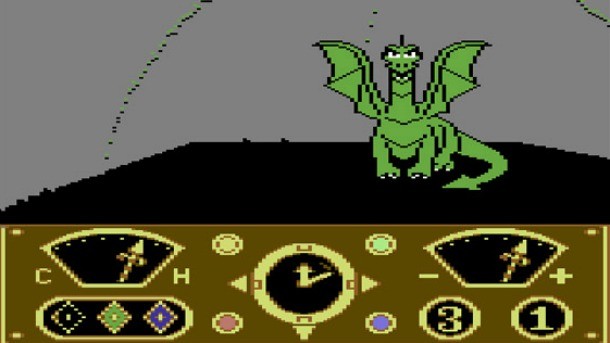
The Eidolon
LucasFilm Games
1985
PC
Despite the fact that dragons and goblins are also present in The Eidolon, this game was one of the first to showcase the steampunk aesthetic. Players must guide the titular machine through a subterranean maze filled with enemies of varying colors. As each enemy is eliminated, the dashboard of the machine is constantly whirring and brass gauges are shifting, providing an (at the time) immersive first-person experience. Should the Eidolon sustain damage, one of the needles will move towards the negative end of a dial. This innovative health bar helped establish a clean user interface, but also enforced the steampunk style.
Though the environments in the game are bland and simplistic by today’s standards, the Eidolon machine itself looks torn straight out of a Jeter novel.
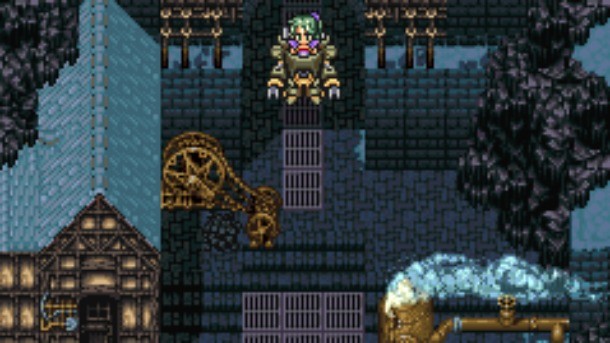
Final Fantasy VI
Square
1994
SNES
The Final Fantasy series is rife with steampunk themes, but VI was the first to use them to the fullest. The game shrugged off the medieval settings of the previous installments in favor of a more technologically advanced world. With an opera-focused soundtrack, allusions to 19th fine arts are also apparent. The story itself opens on an environment where industry has replaced magic. Towns like Albrook, Zozo, and Narsche exhibit buildings reminiscent of Britain during the Industrial Revolution. Machines litter the corridors of the villain Kefka’s tower, providing a fitting backdrop to the final moments of the game. Despite the fact that magic plays a prominent part in the story of FF VI, industrial age design permeates the entire title. There are steampunk elements in later Final Fantasy titles, but FF VI was the first to fully embrace the style.
[Next Up: The Origin Of The Stealth Genre]
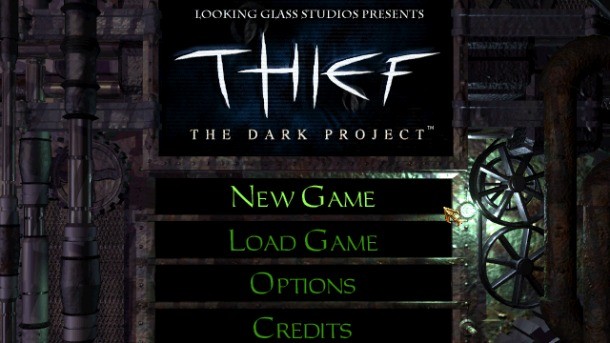
Thief: The Dark Project
Looking Glass Studios
1998
PC
Perhaps due to the amount of environmental interaction present in the Thief series, the steampunk mood is driven home especially well here. Widely considered to be the origin of the modern stealth genre, the first Thief game places players in “The City,” where medieval architecture meets industrial machinery. Light flickers on the damp walls as footsteps echo across gothic corridors. The gaslight torches and other sources of light can be extinguished in order to remain hidden, which makes the lighting effects all the more pivotal. A looming mansion, abandoned city district, and underground lair all present a compelling environment in which to fool enemies.
The game places an emphasis on the confluence of magic and technology. Similar to some modern games, players can learn about the story and environment from notes and overheard conversations. This allows Thief to create an immersive steampunk setting.
Without Thief, we very well might have missed out on titles like Splinter Cell or Assassin’s Creed. Thief's gameplay set the tone for subsequent titles in the stealth genre, and the setting was one of the first to fully envelop players in a steampunk world.

Arcanum: Of Steamworks and Magick Obscura
Troika Games
2001
PC
If ever a game exuded a steampunk demeanor, it was Arcanum. From the title, to the box art, to the industrially developed cities of its world, everything about the game is defined by the unique aesthetic. The archetypical Elf, Dwarf, and Orc races suggest a fantasy setting, but flintlock pistols and repeater rifles showcase a different direction. This blend of science fiction and technology is apparent in the loot that players collect as they progress through an isometric RPG similar to the first Fallout game. Even the health and mana of each character are shown as tubes encased in bronze casings.
The game’s blend of the mystical and industrial creates a compelling setting to explore. A lack of modernization in certain areas creates a drastic change in scenery from the zeppelins and steam trains scattered throughout the rest of the game world, and also an interesting view of the effects of industry. Though developer Troika Games dissolved in 2005, the studio was successful in creating the quintessential steampunk game.
[Next Up: A Couple Of Unique Shooters]

Darkwatch
High Moon Studios
2005
PlayStation 2, Xbox
Although not a widely known shooter, Darkwatch garnered a cult following with its unique story and unusual setting. A Wild West environment filled to the brim with revolver-wielding vampires and colossal steam trains set the tone for an engaging tale. Betrayal, temptation, and the battle between magic and technology are all themes that pervade this title, cementing its steampunk credentials. While some missions play out like a gunfight at the OK Corral, others task players with hijacking industrial steam trains.
Darkwatch’s gameplay isn’t particularly innovative. Aside from the previously mentioned melee attacks and several novel character abilities, the shooting is fairly generic. The game is, however, best remembered for its unique style – which has steampunk written all over it.
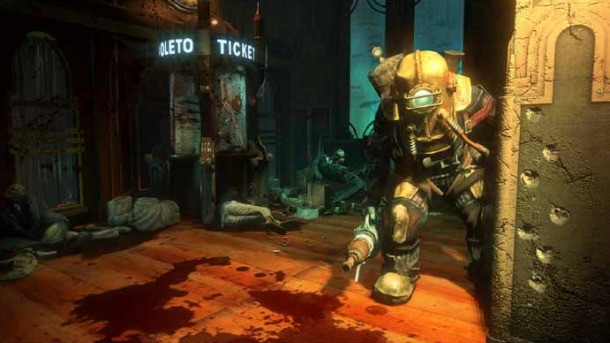
BioShock
2K Boston
2007
Xbox 360, PlayStation 3, PC
Based on cosmetics alone, BioShock exhibits some qualities of a steampunk game. It doesn’t take place in the 19th century, but the influences are hard to ignore.
BioShock is known for its captivating setting in the underwater city of Rapture. The drowned metropolis is covered with art deco influences in the furniture and architecture, a product of upper-class taste. A constant supply of backstory is provided by notes and audio recordings strewn throughout the believable world, elevating the environment as a character in itself. The game is set sometime later in the 20th century, but level and character designs often suggest an earlier time period. Between every Vita chamber and Big Daddy, Rapture stands as one of the most memorable steampunk settings in video games.
[Next Up: A Forgotten Title And A Recent Release]
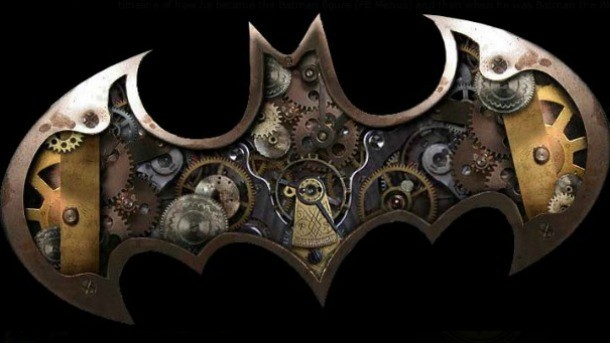
Gotham by Gaslight
Day 1 Studios
[Never released]
Gotham by Gaslight is a well-received Batman graphic novel set in an alternate timeline concerning the infamous Jack the Ripper. The 1889 setting sets the story up perfectly for a dive into the steampunk style. So much so that Day 1 Studios began development on a game derived from the graphic novel. The pitch to THQ failed, but the in-game menus and gameplay footage that have surfaced have left many forlorn at the game’s disappearance.
Apparently, players would play the role of the Dark Knight in 19th century Gotham City during the murders of Jack the Ripper. The plot and setting are clearly indicative of the steampunk intentions with the game, leaving many wondering if a developer besides Rocksteady could have nailed a Batman game.
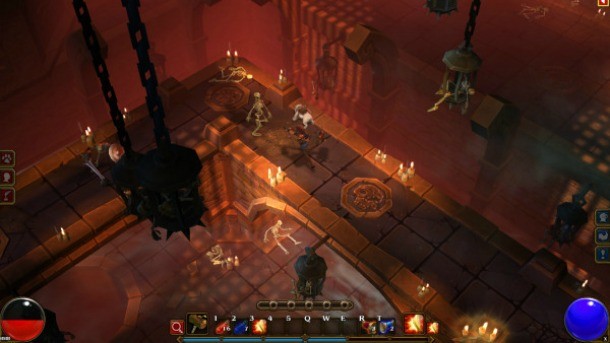
Torchlight 2
Runic Games
2012
PC
The recently released Torchlight 2 mimics Diablo in terms of gameplay, but its visual style sets it apart. Cartoon graphics bely a vibrant steampunk world, rife with beasts as well as machines. Underground caverns sparkle with bronze pillars and ancient machinery, while the characters represent the style as well.
From the Outlander who uses ranged pistols and shotguns to the melee focused Engineer, the character cosmetics clearly display a steampunk influence. A blend of ancient magic and industrial armor round out the mood of the game, but also provide the basis of an in-depth skill tree. Standing as one of the most recent entries in the steampunk aesthetic, Torchlight further proves the style can help create a wonderful setting.










